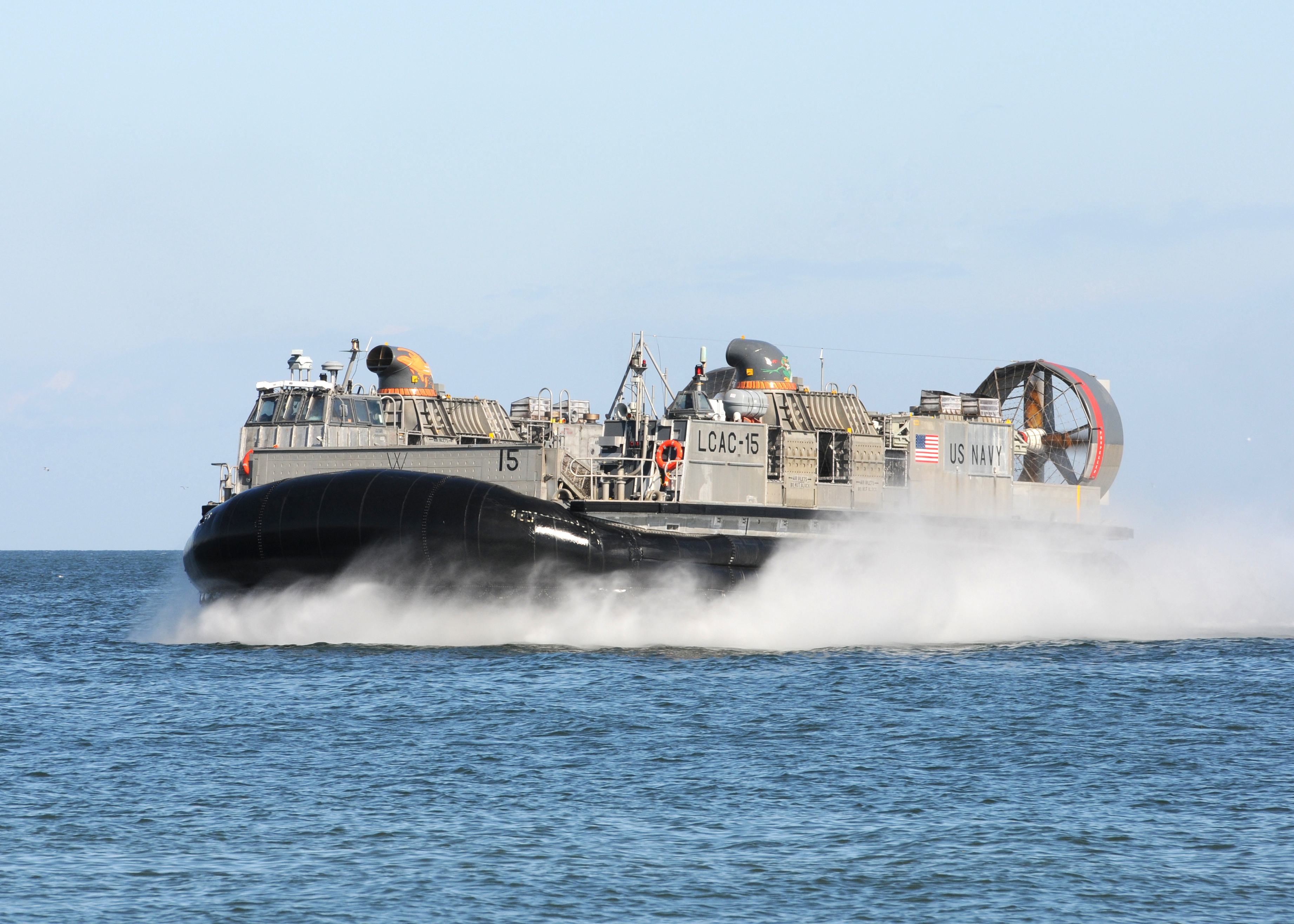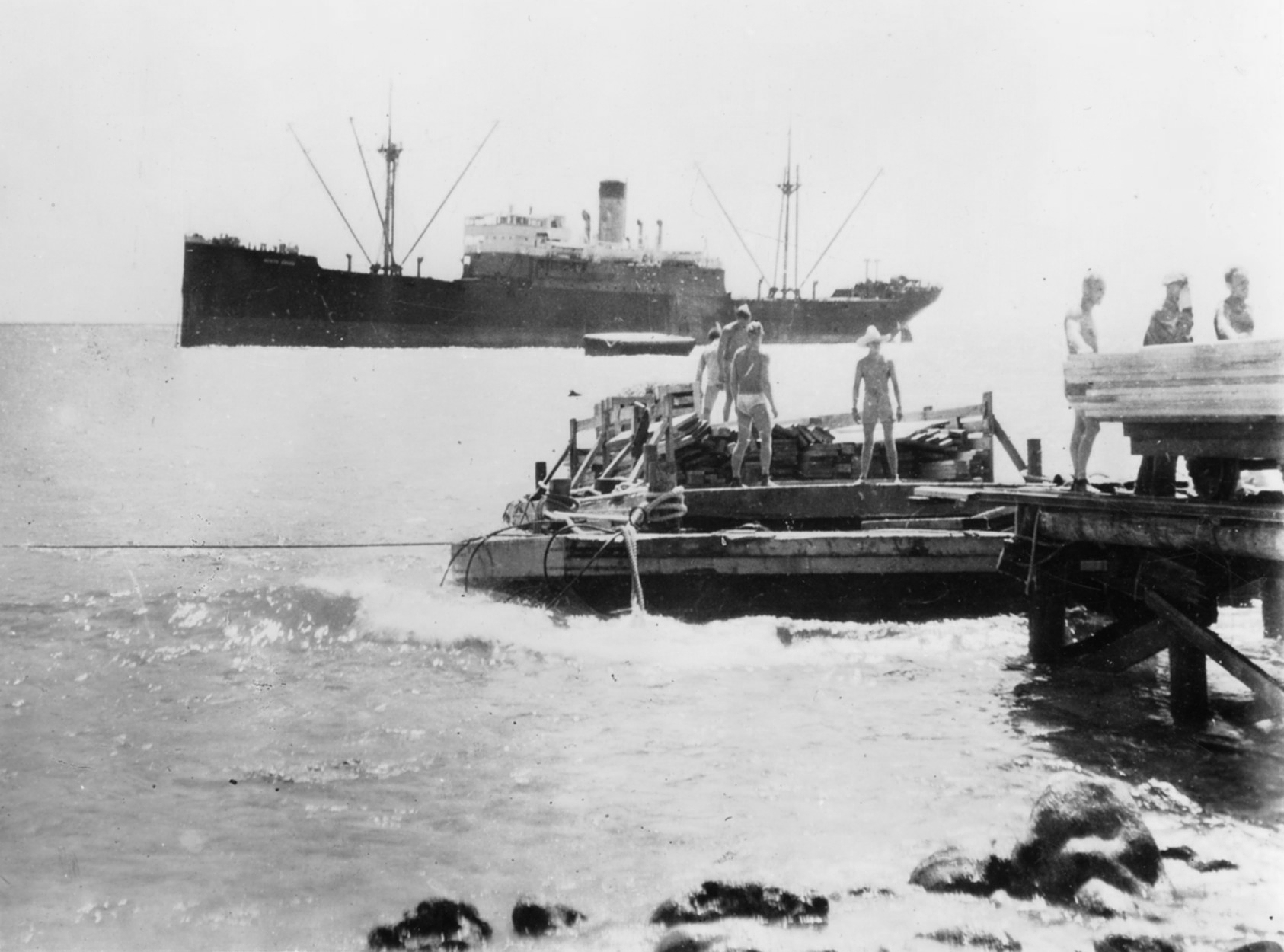|
Naval Beach Group Two
Naval Beach Group Two, (NBG-2) is a United States Navy amphibious unit based at Naval Amphibious Base Little Creek, Virginia Beach, Virginia. Naval Beach Group One is its sister unit based in Naval Amphibious Base Coronado in Coronado, California. Mission Since its inception 19 July 1948, Naval Beach Group TWO (NBG-2) and its component commands have participated in a variety of amphibious operations. Commander, Naval Beach Group TWO (CNBG-2) functions under two distinct missions. During amphibious assaults, they provide personnel to support and operate causeway lighterage, LCACs, LCUs, buoyant ship-to-shore bulk fuel systems, beach traffic control, and beach salvage equipment. The second mission is under the Maritime Preposition Force (MPF) concept which uses the equipment and supplies prepositioned on board forward deployed Maritime Prepositioning ships (MPS). Joining forces with the Marine Expeditionary Brigade (MEB), CNBG-2 forms and commands the Naval Support Element (NS ... [...More Info...] [...Related Items...] OR: [Wikipedia] [Google] [Baidu] |
Lighterage
Lightering (also called lighterage) is the process of transferring cargo between vessels of different sizes, usually between a barge (lighter) and a bulker or oil tanker. Lightering is undertaken to reduce a vessel's draft so it can enter port facilities that cannot accept large fully-loaded ocean-going vessels. Lightering can also refer to the use of a lighter barge for any form of short-distance transport, such as to bring railroad cars across a river. In addition, lightering can refer to the process of removing oil or other hazardous chemicals from a compromised vessel to another vessel to prevent an oil spill. History Lightering was practiced for all types of cargo for centuries. Prior to the 19th century introduction of steamships too large to enter some of the ports they intended to serve, in which case lightering became necessary to reduce the vessels' draft sufficiently to enter the port, cargoes ranging from water to ships' stores (food, livestock, misc. supplies), to gun ... [...More Info...] [...Related Items...] OR: [Wikipedia] [Google] [Baidu] |
Island-hopping
Leapfrogging, also known as island hopping, was a military strategy employed by the Allies in the Pacific War against the Empire of Japan during World War II. The key idea is to bypass heavily fortified enemy islands instead of trying to capture every island in sequence en route to a final target. The reasoning is that those islands can simply be cut off from their supply chains (leading to their eventual capitulation) rather than needing to be overwhelmed by superior force, thus speeding up progress and reducing losses of troops and materiel. Background By the late 19th century, the U.S. had several interests in the western Pacific to defend; namely, access to the Chinese market, and its colonies – the Philippines and Guam – which the U.S. had gained as a result of the Spanish–American War (1898). After Japan's victories in the Sino-Japanese War (1894–95) and the Russo-Japanese War of 1904, the U.S. began to regard Japan as a potential threat to its interests in ... [...More Info...] [...Related Items...] OR: [Wikipedia] [Google] [Baidu] |
Over-the-horizon
Over-the-horizon radar (OTH), sometimes called beyond the horizon radar (BTH), is a type of radar system with the ability to detect targets at very long ranges, typically hundreds to thousands of kilometres, beyond the radar horizon, which is the distance limit for ordinary radar. Several OTH radar systems were deployed starting in the 1950s and 1960s as part of early warning radar systems, but these have generally been replaced by airborne early warning systems. OTH radars have recently been making a comeback, as the need for accurate long-range tracking becomes less important with the ending of the Cold War, and less-expensive ground-based radars are once again being considered for roles such as maritime reconnaissance and drug enforcement. Technology The frequency of radio waves used by most radars, in the form of microwaves, travel in straight lines. This generally limits the detection range of radar systems to objects on their horizon (generally referred to as "line of ... [...More Info...] [...Related Items...] OR: [Wikipedia] [Google] [Baidu] |
Naval Special Warfare Command
The United States Naval Special Warfare Command (USNSWC), also known as (NAVSPECWARCOM and WARCOM), is the naval component of United States Special Operations Command, the unified command responsible for overseeing and conducting the nation's special operations and missions. Originating in the unconventional naval units formed during the Second World War, WARCOM was established on 16 April 1987 at Naval Amphibious Base Coronado in San Diego, California. Its mission is to provide leadership, doctrinal guidance, resources and oversight to special operations carried out in maritime and littoral environments. WARCOM specializes in a broad range of tactical areas, including unconventional warfare, direct action, counterterrorism, special reconnaissance, and personnel recovery. WARCOM is organized primarily around eight Navy SEAL teams, three Special Boat Teams, and various supporting commands, totaling approximately 9,200 personnel. Units can operate independently, as part of na ... [...More Info...] [...Related Items...] OR: [Wikipedia] [Google] [Baidu] |
Underwater Demolition Team
Underwater Demolition Teams (UDT), or frogmen, were amphibious units created by the United States Navy during World War II with specialized non-tactical missions. They were predecessors of the navy's current SEAL teams. Their primary WWII function began with reconnaissance and underwater demolition of natural or man-made obstacles obstructing amphibious landings. Postwar they transitioned to scuba gear changing their capabilities. With that they came to be considered more elite and tactical during the Korean and Vietnam Wars. UDTs were pioneers in underwater demolition, Rebreather, closed-circuit diving, combat swimming, and midget submarine (dry and Wet sub, wet submersible) operations. They later were tasked with ensuring recovery of space capsules and astronauts after splash down in the Mercury program, Mercury, Gemini program, Gemini and Apollo program, Apollo space flight programs. Commando training was added making them the forerunner to the United States Navy SEAL progra ... [...More Info...] [...Related Items...] OR: [Wikipedia] [Google] [Baidu] |
Amphibious Construction Battalion TWO
Amphibious Construction Battalion TWO (abbreviated as ACB 2, or PHIBCB 2) is an amphibious construction battalion in the United States Navy based in Little Creek, Virginia. Amphibious Construction Battalion ONE is its sister unit based in Coronado, California. Mission PHIBCB TWO combines the small craft expertise of the surface navy with the construction capabilities of the Naval Construction Force. We support Commander, Naval Beach Group Two in amphibious force projection with fully trained, combat ready forces. History ACB 2 has its beginnings in World War II. It started out as the 105th Naval Construction Battalion. She was commissioned 24 July 1943 at Camp Peary.105th Naval Construction Battalion, Bureau of Yards and Docks, Department of the Navy 1946, Seabee Museum, Port Hueneme, CA/ref> From there she was sent to Camp Parks, in California, and then to Advance Base Depot Port Hueneme. While there the battalion became part of movie history by providing the men a ... [...More Info...] [...Related Items...] OR: [Wikipedia] [Google] [Baidu] |
Expeditionary Strike Group
In the United States Navy, the expeditionary strike group (ESG) is a coordinated group of surface ships, aircraft, submarines, and other naval assets. In contrast to carrier strike groups (CSGs), which emphasize air power and are led by a supercarrier, ESGs are strongly suited for amphibious warfare and are led by an amphibious assault ship (currently of the ''Wasp'' or ''America'' classes). The ESG concept was introduced in the early 1990s, based on the Naval Expeditionary Task Force. The U.S. Navy fields nine expeditionary strike groups and ten carrier strike groups, in addition to surface action groups. The ESG concept combines the capabilities of surface action groups, submarines, and maritime patrol aircraft with those of amphibious ready groups (ARGs) and Marine expeditionary units (MEUs) (special operations capable) to provide greater combat capabilities to theater combatant commanders. An expeditionary strike force (ESF) integrates the CSG and ESG with the sea-basing fun ... [...More Info...] [...Related Items...] OR: [Wikipedia] [Google] [Baidu] |
US Atlantic Fleet
The United States Fleet Forces Command (USFF) is a service component command of the United States Navy that provides naval forces to a wide variety of U.S. forces. The naval resources may be allocated to Combatant Commanders such as United States Northern Command (USNORTHCOM) under the authority of the Secretary of Defense. Originally formed as United States Atlantic Fleet (USLANTFLT) in 1906, it has been an integral part of the defense of the United States of America since the early 20th century. In 2002, the Fleet comprised over 118,000 Navy and Marine Corps personnel serving on 186 ships and in 1,300 aircraft, with an area of responsibility ranging over most of the Atlantic Ocean from the North Pole to the South Pole, the Caribbean Sea, Gulf of Mexico, and the waters of the Pacific Ocean along the coasts of Central and South America (as far west as the Galapagos Islands). In 2006 the U.S. Atlantic Fleet was renamed United States Fleet Forces Command. The command is based ... [...More Info...] [...Related Items...] OR: [Wikipedia] [Google] [Baidu] |
Naval Support Element
A navy, naval force, or maritime force is the branch of a nation's armed forces principally designated for naval warfare, naval and amphibious warfare; namely, lake-borne, riverine, littoral zone, littoral, or ocean-borne combat operations and related functions. It includes anything conducted by surface Naval ship, ships, amphibious warfare, amphibious ships, submarines, and seaborne naval aviation, aviation, as well as ancillary support, communications, training, and other fields. The strategic offensive role of a navy is Power projection, projection of force into areas beyond a country's shores (for example, to protect Sea lane, sea-lanes, deter or confront piracy, ferry troops, or attack other navies, ports, or shore installations). The strategic defensive purpose of a navy is to frustrate seaborne projection-of-force by enemies. The strategic task of the navy also may incorporate nuclear deterrence by use of submarine-launched ballistic missiles. Naval operations can be broa ... [...More Info...] [...Related Items...] OR: [Wikipedia] [Google] [Baidu] |
Maritime Prepositioning Ship
Strategic sealift ships are part of the United States Military Sealift Command's (MSC) prepositioning program. There are currently 17 ships in the program, strategically positioned around the world to support the Army, Navy, Air Force, Marine Corps and Defense Logistics Agency. Most are named after Medal of Honor recipients from the service they support. The ships are assigned to two Military Prepositioning Ship (MPS) squadrons located in the Indian Ocean at Diego Garcia and in the Western Pacific Ocean at Guam and Saipan. The MPS ships in each squadron have sufficient equipment, supplies and ammunition to support a Marine Air-Ground Task Force for 30 days. The MPS ships are self-sustaining, with cranes to unload at sea or pierside. MSC chartered the first two ship classes in the MPS role (the ''Corporal Louis J. Hauge Jr.'' and ''Sergeant Matej Kocak'' classes) from civilian shipping lines and converted them. Later ships were purpose-built. Ships ''Sergeant Matej Kocak'' cla ... [...More Info...] [...Related Items...] OR: [Wikipedia] [Google] [Baidu] |









.jpg)